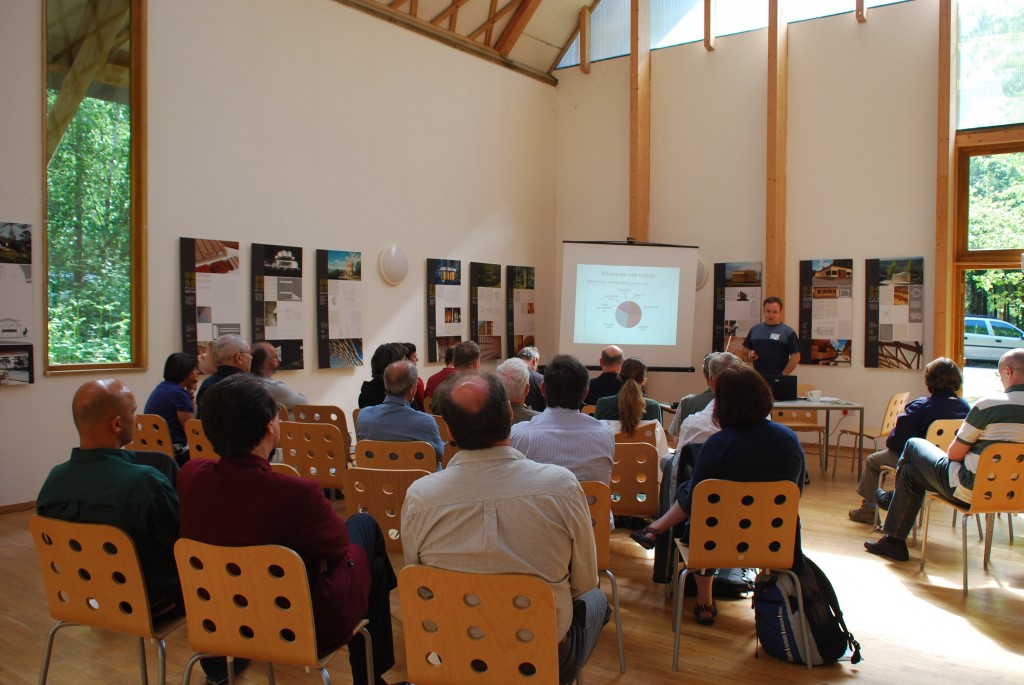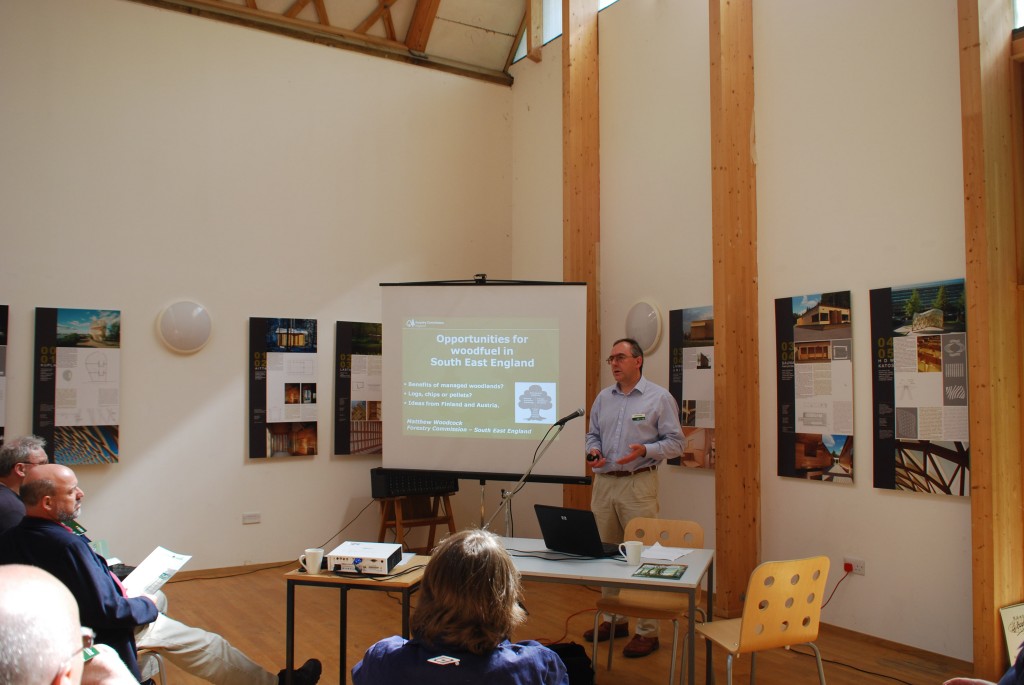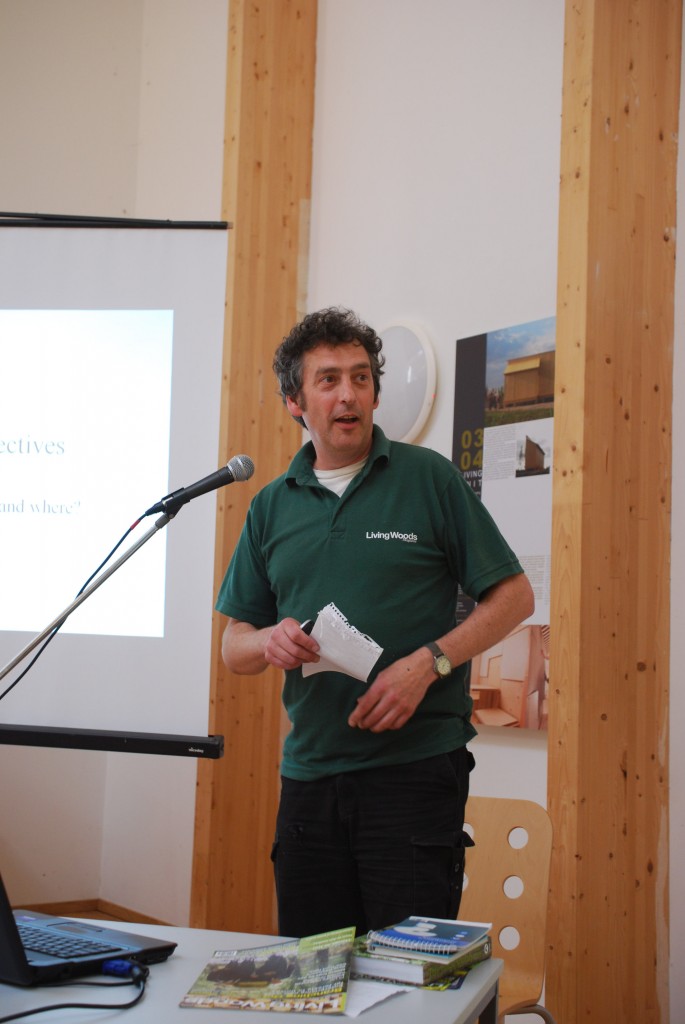This was a very successful and informative event held at Flimwell last weekend (22nd May). There were three main speakers, Mike Pepler of Ashden Awards, Matthew Woodcock from the Forestry commission and Nick Gibbs editor of Living Woods magazine.

Mike began by asking the question:
- Is it green to burn wood?
The answer – Yes … but?
Some nice pie charts showed us that nearly a third of our total energy consumption is used in the home, of that almost two thirds goes to heating our living space. So anything we can do to reduce our use in this area could potentially have a significant impact on our total CO2 emissions.
He pointed out that although burning wood gives off carbon dioxide, growing it absorbs CO2, making wood, a ‘low carbon’ fuel. Things that could help reduce it’s footprint further include:
- Minimizing the use of chainsaws and mechanisation in harvesting wood
- Reducing the transportation or your wood, by collecting locally and combining the journey with other errands.
- Using an efficient wood burning stove, open fires may look nice, but are very inefficient and don’t give a complete combustion.
- Insulating – true of all fuels, serious savings can be made by comprehensively insulating your home.
So yes, Mike concluded that in comparison to a lot of other fuels, burning wood is ‘greener’, but there are many things you can do to make it even more ‘green’.
Mike finished by talking about the importance of reducing the moisture content of your wood to ensure that as little energy as possible is expended in boiling off the water content. He also gave some very handy advice on the logistics of cutting, seasoning and processing your wood.

In Summary:
- Fell in winter, extract in summer
- Split (and stripe) soon after felling
- Store off the ground, with good airflow and under cover
Next up was Matthew Woodcock from the Forestry Commission. He is their programmes manager and leads on wood fuel.

Matthew gave us a quick overview of the extent of woodland cover in the country, focusing on the south east where at 14% it represents an under developed resource. He illustrated the importance of managing these woodlands from a wildlife perspective by using the example of the small pearl-bordered fritillary. This butterfly has benefited in the last few years from targeted conservation projects involving sensitive woodland management to increase it’s distribution.
Matthew went on to look at the pros and cons of using different types of woodfuel, pellets, chips or just plain old logs. Then examined the different systems employed to utilize them and the technological advances which are making these boiler systems and modern wood burning stoves an efficient and viable option.
He was particularly keen on trying to turn around our historical attitude of relying on fossil fuels in favour of a more continental approach. Matthew cited examples of Austria and Finland where their wood burning infrastructure is way in advance of ours. Due mainly to the fact that these countries have by necessity had to provide cheap, sustainable and reliable systems of using wood in a much harsher climate, without relying on the oil and gas reserves the UK has ‘enjoyed’.
Finally Nick Gibbs from Living Woods magazine gave a very entertaining personal account of the evolution of his stove use.

Nick guided us through the highs and lows of his stove use over the years and concluded with the following advice. They can be dusty, they need a lot of care, it’s easy to buy them too big and you must match your stove to your materials.
Other grateful contributions were received from the kindly folk at Anglia Fireplaces & Design Ltd, Laurie Buckingham, inventor and manufacturer of the much acclaimed Buckingham Woodstation, and Euroheat surpliers of wood burning stoves and boilers.
Other resources: